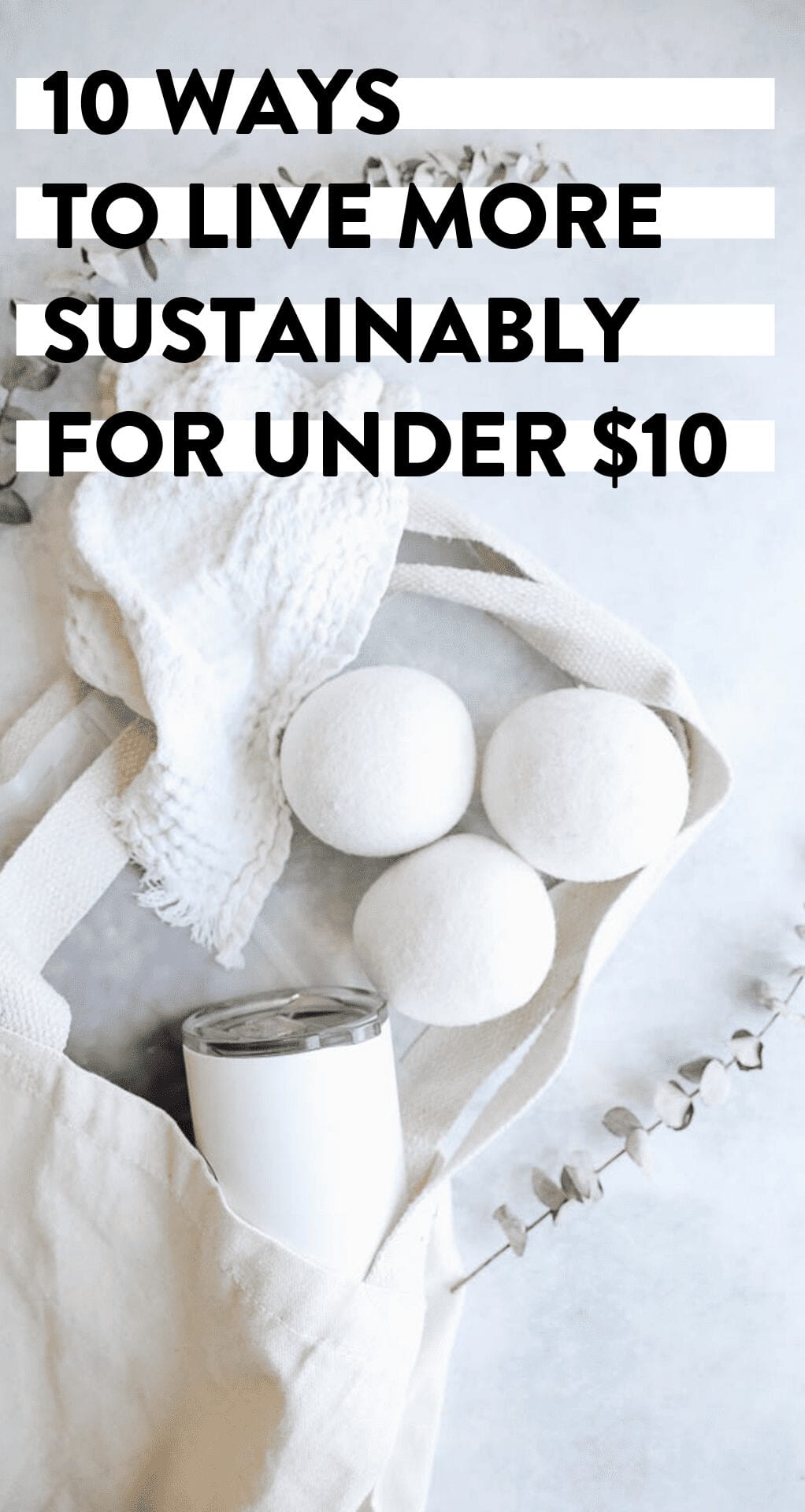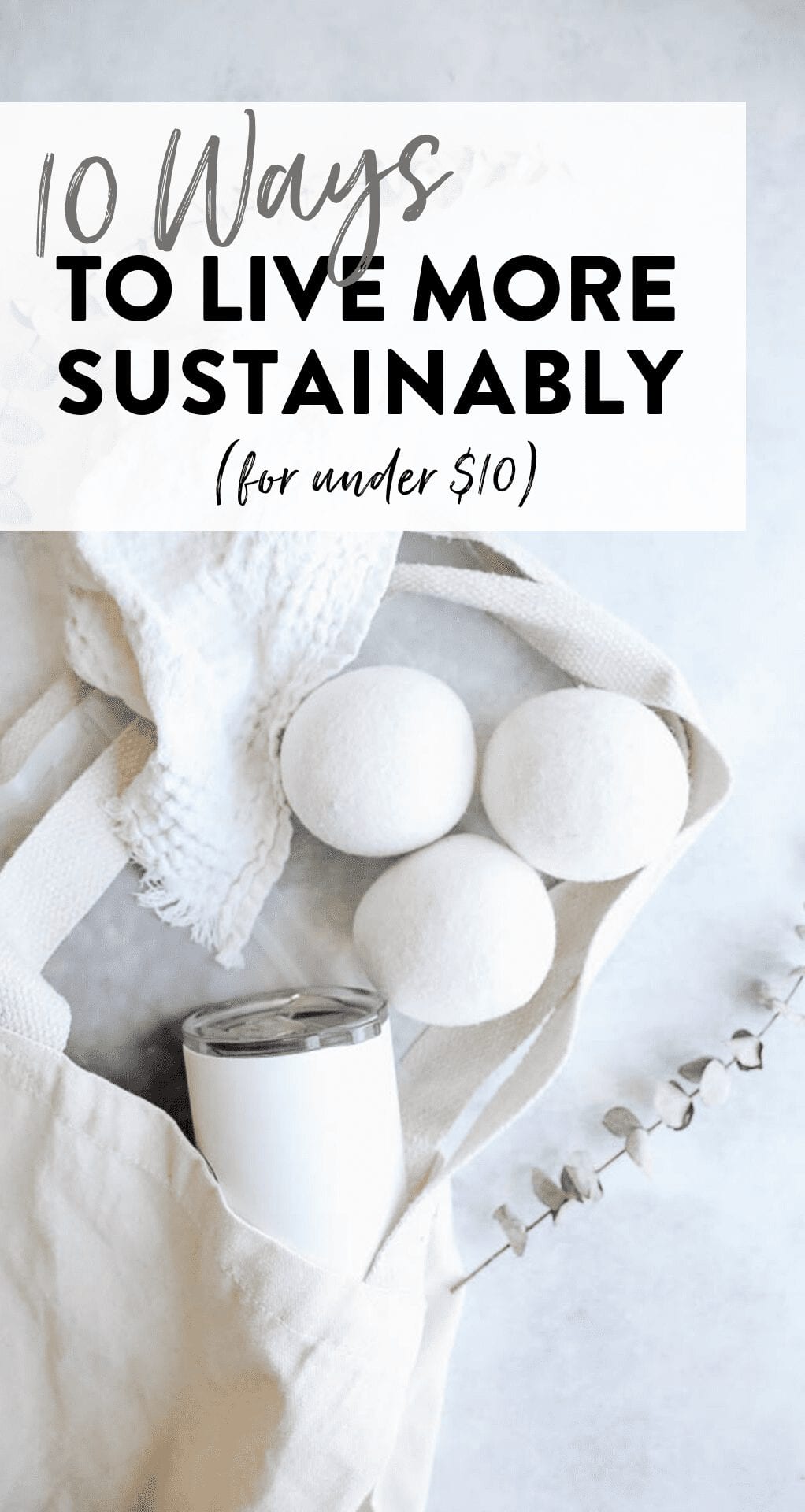This page contains some affiliate links. Please review my disclosure policy.
With issues caused by climate change on the rise, it’s no question why we’re hearing more about sustainable living. It’s easy to blame the problem on other people and point fingers at the biggest culprits but how often are you turning the lens around and taking a good look at the choices you make to live more sustainably? Now to be fair, no one is perfect and everyone has different priorities/accessibility/values but it’s important to assess where you’re at with your own choices and how you can make small changes no matter how big or small their impact.
There are, of course, big changes you could make. We’d all love to drive a Tesla right? But it’s important to start small and really set some good sustainable living habits that work with your lifestyle. From there you can start making larger changes.
Sustainable Living – Why is it Important?
What we do in our daily lives has an environmental impact. Voting with your vote is incredibly important, but we also vote everyday with our wallets and our purchasing habits. Sustainability isn’t always convenient. It requires you to make changes that aren’t always comfortable, but we need to be mindful not only for ourselves but for future generations as well.
So while these tips may be affordable (most cost less than $10!), they aren’t always easy. Remembering your shopping bags or coffee cup requires you to think ahead. Purchasing used or second hand takes some getting used to and saying no is more difficult than you might realize. But trust me, it’s worth it.
10 Ways to Live More Sustainably
There are so many ways to live a more sustainable life. Some are more expensive and some are super affordable ways! I wanted to focus on the affordable ways because who doesn’t love budget-friendly tips?!
1. Dryer balls – Did you know that dryer sheets can be really harmful to the environment and for your health? They’re packed with chemicals that can pollute the air (both in and out of your home). An easy swap for dryer sheets are dryer balls. They also help cut down on your drying time so they’re a double win. They are typically made from wool and work just as well as traditional dryer sheets. Plus they’re reusable!
Cost:$10
2. Reusable Shopping bags – Do you bring your own shopping bags to the grocery stores or farmers markets? I know it can be hard to get into the routine but once you start, it becomes second nature! Don’t feel like you need a fancy cloth shopping bag to bring with you, any ol’ bag will work! I have a stock pile of bags from tons of different places – freebie bags from a convention? Check! Cloth shopping bags from Outdoor Voices? Yup!
Cost: free- $10
3. Reusable Produce Bags – or better yet – skip them altogether! Does every single piece of fruit or veggie need to be individually bagged in plastic? Probably not. You can grab some reusable produce bags or reuse the plastic ones you’ve already gathered. For produce that doesn’t really need to be bagged just skip them altogether. Also it’s time to ditch the ziploc bags – we love these reusable ones from Amazon.
Cost: $10
3. Reusable Water Bottle + Coffee Cup – Think twice before heading out to grab your morning cup of coffee and bring a reusable mug! How much less would you waste if you used your own coffee mugs rather than to-go cups?! Holy cow… so much. Bonus points: grab a reusable straw for those iced drinks. Single-use plastics are s0 2018. Similar to the coffee cup, keep a reusable water bottle on you! I always have a water bottle on hand because ya girl gets thirsty and I hate having to buy a bottled water. P.S. One of the best wedding gifts C and I got (from Tanya!) were these coffee cups from Byta. We’ve travelled around the world with them.
Cost: $5-10
4. Ditch the paper towels – I’ll be honest, I haven’t fully ditched these yet but we mostly use dish towels for wiping down counters and cleaning up messes and have totally switched to fabric napkins. Pro-tip: Cut up old t-shirts that have holes in them and use them as cleaning rags.
Cost: free – $10
5. Menstrual cup – I already shared why I’ll never go back to tampons and I stand by that! Women, if you get regular periods you are getting a period every dang month. Think of how many feminine products you’re using each month, let alone year or lifetime! Menstrual cups take a few cycles to get used to but are 1000% worth the switch!
Cost: $30-$50 but will last up to 3 years!
6. Say no to junk mail – Anyone else fed up with how much junk mail you get?! Pro tip: you can take your name off those mailing lists! Huzzah! Head to the Federal Trade Commission website to opt-out.
Cost: $2
7. Shop Used – Did you know that the fashion industry is responsible for up to 8% of all carbon emissions? It’s time to end fast fashion and start shopping used! Want to know a little secret? Before I go to any stores or shop online, I always check used or vintage stores. I even found a dress for a black tie wedding for $22 a few weeks ago! If you don’t have used shops near you check out sites like Poshmark or ThredUp for similar dupes at a fraction of the price.
Cost: varies but clothing can be purchased for less than $5 generally
8. Walk, bike or take public transportation – How often do you hop in the car when you could really walk, bike or take public transportation to your location? Try taking public transit if it’s accessible or hop in a Lyft Line to carpool with other passengers. It takes a mind shift but I want to encourage you to think twice before driving somewhere! Get some fresh air and save the environment.
Cost: varies but can add up
9. Buy organic – Research shows that organic farming has a lower net energy footprint compared to conventional (source). Because most energy is produced by burning fossil fuels that release carbon dioxide (the most common greenhouse gas), lower energy use means less climate change. There is also evidence that organic practices, with their focus on improving soil quality actually store more carbon in soil. If you can stretch it, most organic foods cost less than $1 more than conventional.
Cost: varies but generally $1-2 dollars more expensive than conventional
10. Say no! Remember reduce, reuse, recycle? It’s time we get back to basics. Where can you reduce in your life? Maybe you cut back on the amount of water you use, or turn down all the swag at your next conference. Where can you reuse something? Ahem, reusable bags! Start saying no – it’s the most effective way you can live sustainably.
Cost: FREE!

Like this post? Here are some others to help you live more sustainably:
How to Build a Sustainable Kitchen
5 Reasons to Choose Organic
What the Heck is Glyphosate and Why You Need To Know About it













Love it. Just opted out of snail mail and off to research dry cleaner balls. 🙂
YES! So happy to hear that. Also once you stop getting junk mail it is honestly the best feeling ever!
great list… and I love your overalls!!
Thanks babes 😉
i love your post. thanks for sharing!
of course!